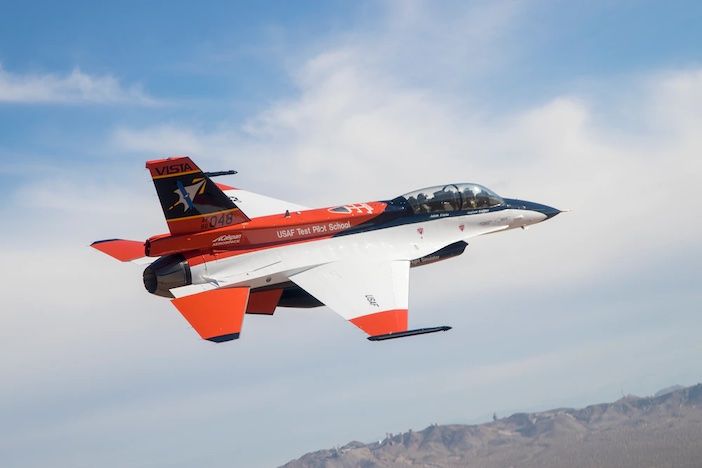The X-62 VISTA has made its first flight from Edwards Air Force Base in California ahead of its use by the US Air Force for training and testing manned-unmanned teaming aircraft operations.
The NF-16D Variable In-flight Simulator Aircraft (VISTA) was redesignated as the X-62 last year and has been upgraded to support autonomous systems training and testing for the US Air Force Research Laboratory’s (AFRL) Skyborg program.
Skyborg aims to enable the US Air Force to operate and sustain low-cost, unmanned “teamed aircraft” that accompany manned fighters. Other manned unmanned teaming (MUM-T) concepts in development include Boeing’s Loyal Wingman in Australia.
The X-62 has been developed by Calspan and Lockheed Martin to create a unique training aircraft.
The aircraft features software, the System for Autonomous Control of the Simulation (SACS) for autonomous flight. SACS software will enable the US Air Force to train pilots in an autonomous environment.
The first flight of the SACS modification program was a success overall, said Calspan, with the X-62 airborne for over an hour. No maintenance issues arose during flight, meaning the X-62 was ready for its next mission without delay.
The company added that the X-62 possesses internal and external configurations as a surrogate test platform and has an open systems architecture (OSA) to make it easier for customers to integrate into the flight control system.
The US Air Force test pilot school is the only school in the world that actively uses the X-62 as part of curriculum.





